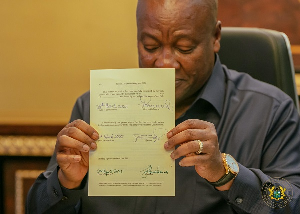The Monetary Policy Committee of the Bank of Ghana has kept the policy rate at 26 percent, citing an encouraging drop in headline and core inflation, and a balance in growth prospects and inflation risks.
Headline inflation rose from 17.7 per cent to 19 per cent in January due to the high utility tariffs and levies on petroleum products, but declined to 18.5 percent in February, and core inflation (consumer price inflation excluding energy and utility prices) has also been on the decline since December 2015.
The chair of the Monetary Policy Committee, the Governor of the Bank, Dr Kofi Wampah said “there is no clear evidence of a further deterioration in inflation expectations in the near term” though inflation expectations from businesses, consumers and the financial sector are high due to recent upward price adjustments in utility tariffs and petroleum prices.
“Our forecasts indicate that barring any further shocks, inflation will peak in the first quarter of 2016, and gradually decline thereafter towards the target band by mid-2017, same as our January forecast,” Dr Wampah said.
He conceded that there are risks to the inflation outlook from the second round effects of the upward price adjustments in transportation and the tight external financing conditions.
The MPC, however, views the growth outlook and the risks to inflation as balanced, reflected in its decision to maintain its current monetary policy stance.
On the high policy rate and prospects for its reduction, Dr Wampah noted inflation was still significantly higher than the target band of 8 ± 2 percent, necessitating the tough decision.
“The committee thinks that the time has not come for us to start going down on the rates. But, of course, we will continue to review the situation and come down as needed.”
Fiscal consolidation he said was on track and growth was expected to get a boost from improvements in the energy situation, additional oil and gas production and the improving macroeconomic environment.
He said provisional financial data shows that fiscal deficit has declined to 7.1 percent of GDP compared to 10.2 percent in 2014. The Cedi also has depreciated by 1.4 percent, compared with a depreciation of 11.2 percent in the same period last year.
Business News of Monday, 21 March 2016
Source: ghanabusinessnews.com
Bank of Ghana maintains policy rate at 26%
Entertainment












